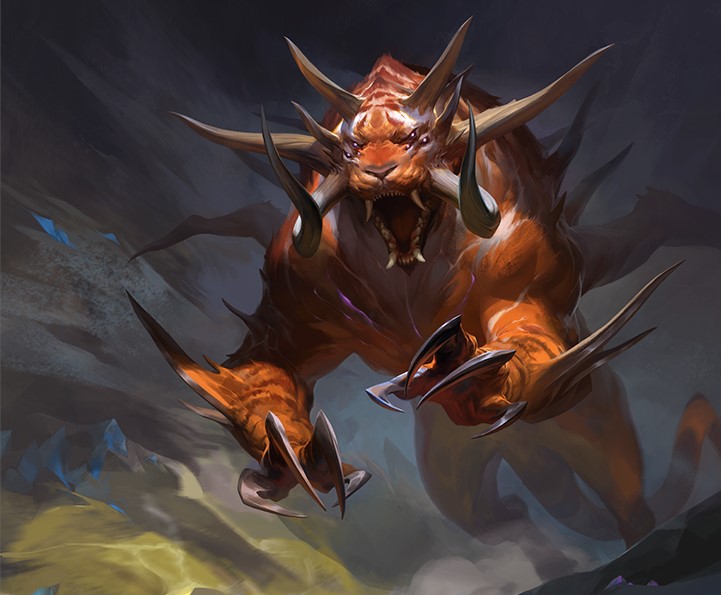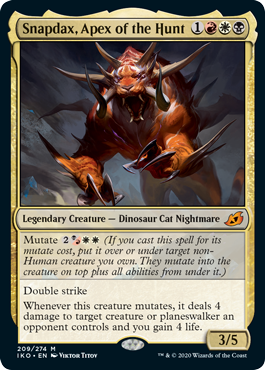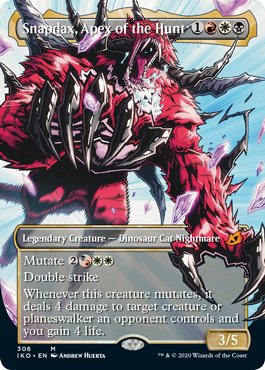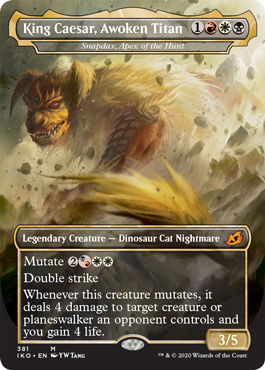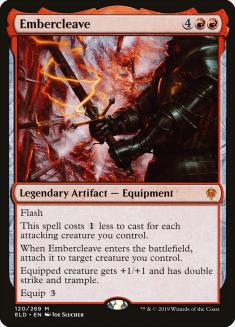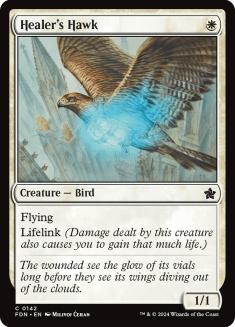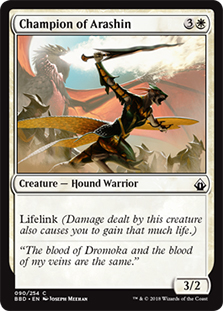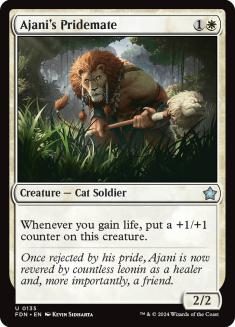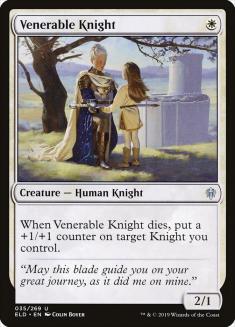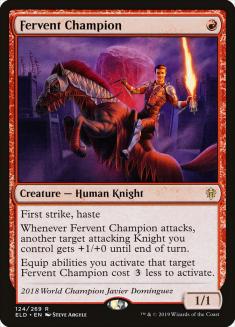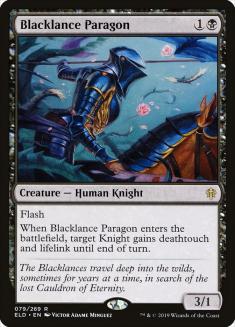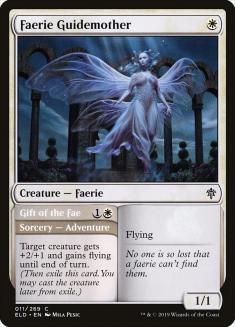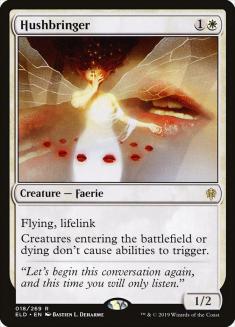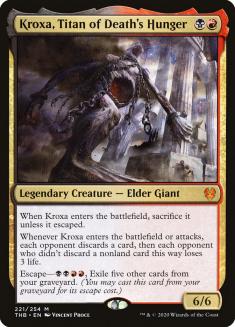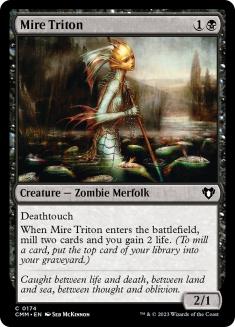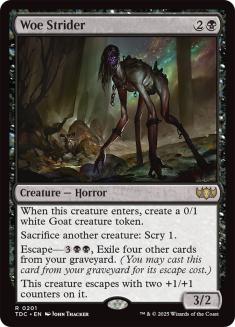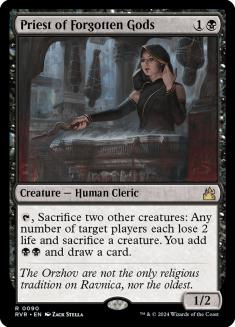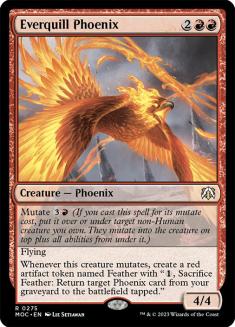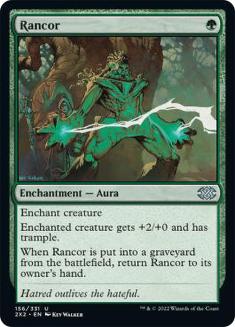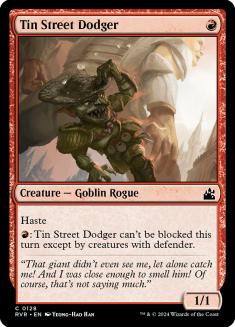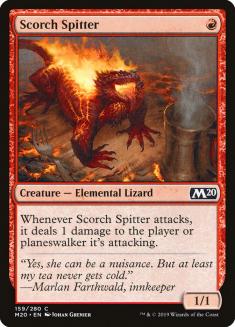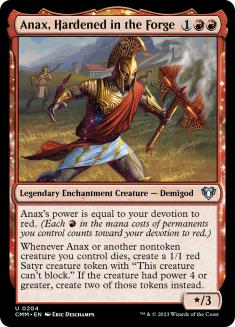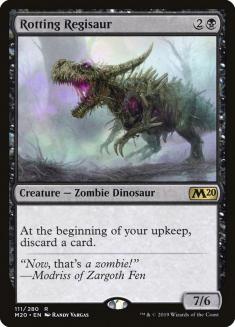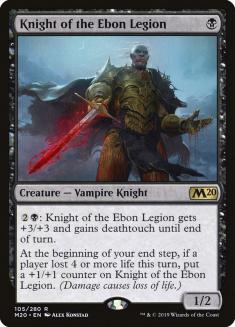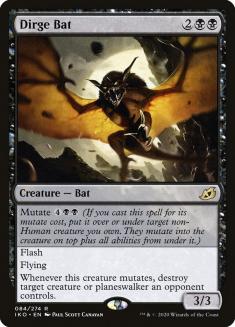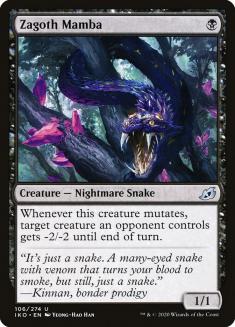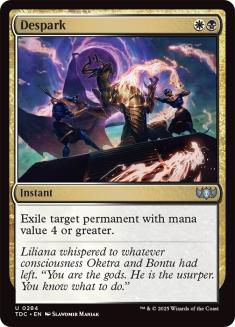Given how interesting of times we live in, Ikoria: Lair of Behemoths preview season got moved around a little bit and is going to be extremely compact. Yesterday, we full-on went from zero to 100.
Without a doubt, the loudest part of yesterday’s tidal wave of previews was the new mutate mechanic (well, that and Godzilla crossing over into Magic). While the mutate mechanic is particularly complex, it’s one of the coolest, most exciting, most engaging mechanics ever. Obviously, we’ve got to actually play with the cards to find out if it has longevity to match how exciting it is at first blush, but my initial response is that we’re dealing with something really special here.
Okay, so where to even begin to evaluate Snapdax, Apex of the Hunt?
Well, for starters, we can set aside the wildcard element of mutate for a second and just check out what the card is without it. Mutate is “strict upside,” so it’s not like this is an unfair baseline to build on.
A 3/5 double striker for four is already a pretty serious piece of work, right? Like, that’s basically better than a 6/5, since half the damage happening at first strike alleviates the risk of most deathtouch creatures, and if we have any pump spells, we’re getting a really good multiplier on their effectiveness.
Okay, so we’re already off to a pretty good start, albeit on a three-color card. How does mutate factor into the equation?
Whenever this creature mutates, it deals 4 damage to target creature or planeswalker an opponent controls and you gain 4 life.
I’m including Snapdax’s mutate trigger, since they are linked in this card. Not every mutate card has such a trigger, and those cards will function all the same ways, just without the bonus effect on the way “in” and the incentive to mutate them further.
I think Level 1 with mutate is to look at it like an Aura. One of the closest mechanics to it is bestow, all the way down to the rule that if the creature you were trying to target becomes illegal in response (such as getting killed or bounced or whatever), you still get the creature you were casting with mutate (it’s just not mutating anymore). Importantly, however, you can’t mutate onto a Human, which is going to have a profound impact on which creatures are used to round out teams.
For Snapdax, this means that you can cast it as a five-cost Aura that gives target creature double strike and gives you a four-point drain to a creature or planeswalker. If the creature you were targeting has stats you value less than a 3/5, you can also change them to 3/5 (and will frequently). Finally, your creature will now have the ability to drain something else for four if you mutate it again. If you were to mutate a second Snapdax onto the first, you’d actually be able to drain twice (whether split between two targets or stacked onto one). You also don’t have to worry about the legend rule, as you’ll only have one creature, and its only name is whatever creature you have on “top.”
As long as the creature you are mutating into wasn’t summoning sick, the creature it mutates into won’t be summoning sick, either. This can lead to some pretty great turns, particularly if whatever you’re mutating with has one or more useful abilities.
That’s right, it’s kind of like an Embercleave with a nice four-point Drain Life attached. Filthy.
Healer’s Hawk is a passable early-game creature. It’s modest, but helpful. Mutate Snapdax onto that, however, and all bets are off!
You get to start the party with a four-point drain, which is already a pretty nice option. Then, you’re looking at a 3/5 double strike, lifelink creature that can’t be blocked by creatures with power three or greater, and it can attack immediately!
In getting a feel for the implications of mutate, it’s important to understand the relative value of stats and abilities on your creatures. For instance, consider the difference between having a 3/2 lifelink creature, like Champion of Arashin, versus a Healer’s Hawk. We’re talking about a creature already on the battlefield, not in hand, mind you.
Normally, the extra +2/+1 is worth a fair bit more than Healer Hawk’s evasion ability. When you cast a Snapdax on either of these creatures, however, their previous stats no longer matter. Now, they are both 3/5s with double strike and lifelink. The Snapdax / Healer’s Hawk mashup, however, also has flying, which happens to be worth a helluva lot more when it’s attached to this serious of a threat.
This isn’t to say that all stats are equal, though. There are a fair number of creatures that get some or all of their stats from +1/+1 counters. When Snapdax mutates with a creature with +1/+1 counters, they stay with the new mutation, regardless of which part ends up on top, as do any Auras and Equipment attached to the target.
Let’s suppose we had a 3/3 Ajani’s Pridemate, thanks to a +1/+1 counter. If we mutate it with a Snapdax, we’ll end up with a 5/7 double strike threat (since we’ll get both the +1/+1 counter from Ajani’s Pridemate and another +1/+1 from the lifegain attached to Snapdax’s mutate ability).
Here’s a really simple application of Snapdax that helps illustrate the range of ways in which these cards can be incorporated into decks.
Creatures (28)
- 4 Ajani's Pridemate
- 4 Healer's Hawk
- 4 Venerated Loxodon
- 4 Charmed Stray
- 4 Faerie Guidemother
- 4 Alseid of Life's Bounty
- 4 Snapdax, Apex of the Hunt
Planeswalkers (2)
Lands (23)
Spells (7)

While Standard isn’t exactly built around Mardu at the moment, we’ve seen Mardu Knights do all right relatively recently. When it comes to mutating, however, we’re probably going to have to start with a completely different foundation. Too many of the Knights that get us in the door for the tribal at all are Human.
That said, it’s not like there isn’t fixing to support three-color decks, particularly with how deceptively easy on your mana Snapdax is for a three-color card. That said, we don’t have to go deep on three colors. We don’t even need to really play a second color if we don’t want to.
It’s not just the whole having only a single mana required of each of its colors thing, either. The mutate ability being castable for 2{B/R}WW means that even if we’re missing black or missing red, we’ll still have the option to mutate Snapdax. This means we can dedicate less fixing to making it castable than we’d otherwise need.
Not only do we have plenty of +1/+1 counters in the list above, we can get extra mileage out of Faerie Guidemother’s +2/+1 and flying ability. Even if Snapdax isn’t mutated with something, we’re still talking about ten damage in the air, which is not too shabby.
Sideboarding Hushbringer always involves a little balancing act with cards like Venerated Loxodon; however, it’s important to remember that mutating doesn’t count as entering the battlefield, so you can definitely run Hushbringers alongside Snapdax without worry, and in fact, flying and lifelink are excellent skills for a small non-Human to have!
While mutate works well with small, non-Human creatures with abilities that scale well on larger threats and with creatures that get some of their stats from external sources, such as +1/+1 counters, that’s not the end of it.
Mutating Snapdax also works well with particularly large creatures, as you just choose the bigger body and immediately get the benefit of double strike. A Turn 4 Kroxa, Titan of Death’s Hunger is already a scary threat, but follow it up with a mutation of Snapdax with it, and you’re attacking for twelve (and that’s assuming the discard trigger doesn’t do another three). Attack triggers rather than enters-the-battlefield abilities are great in terms of continuing to trigger post-mutation (whereas enters-the-battlefield abilities don’t trigger again).
Creatures (28)
- 2 Midnight Reaper
- 4 Priest of Forgotten Gods
- 2 Dreadhorde Butcher
- 3 Mayhem Devil
- 4 Cauldron Familiar
- 3 Woe Strider
- 4 Mire Triton
- 3 Kroxa, Titan of Death's Hunger
- 3 Snapdax, Apex of the Hunt
Lands (24)
Spells (8)

Here’s a straightforward adaption of a Cat Oven strategy to incorporate Snapdax. Notice you don’t actually have to slant white, despite the mutate cost on Snapdrax. If you only find a single white source, you can still cast it as a powerful four-drop, and it’s not like thirteen sources of white is crazy low or anything.
One of the coolest parts of mutate is just how much personalization and customization it affords you. There are so many combinations you can make that are much more than the sum of the parts.
Mutating with a deathtouch creature is excellent, as the first strike half of Snapdax ensures the first three blockers will all die before they’re able to deal any damage, to say nothing of anything it might need to block, making it basically unstoppable in combat.
Turning a 0/1 token into a 3/5 double striking threat that can attack immediately is an awesome way to get even more stats out of the Snapdax. As long as the token isn’t Human, you’re good to go!
Playing with mutate cards doesn’t mean you can’t play Humans. You’ve just got to be mindful of the difference and remember that you can’t mutate with them. Priest of Forgotten Gods is so good for this strategy, I think it’s still worth it, even without being able to combo. It’s not like the Priest wanted to get into combat anyway. And besides, you can still just cast the Snapdax out of your hand as a huge four-drop, so it’s not like it’s stranded or anything.
Snapdax is hardly the only mutate creature in Ikoria: Lair of Behemoths, and thanks to its mutate trigger re-firing each time it mutates, we’ve got extra incentive to look for additional creatures that might cause it to mutate again. Yeah, you can stack a second Snapdax and get two big drains, but you’re not gaining as many new abilities the second time. What else can we mutate it with?
Whenever this creature mutates, create a red artifact token named Feather with “1, Sacrifice Feather: Return target Phoenix card from your graveyard to the battlefield tapped.”
Everquill Phoenix is a helluva Magic card. Right off top, we get a 4/4 flying creature for four, which is pretty close. When you mutate it, however, you get to turn it into a bigger, meaner Rancor.
You see, you can turn whatever creature you had into a 4/4 flying attacker, along with whatever other abilities it had; but that artifact means that if the creature dies, you can get the Phoenix back for only a single mana. Unlike Rancor, the Phoenix isn’t going to be stuck in your hand if you’re without other creatures. Simply drop the Phoenix and keep on trucking!
Creatures (34)
- 4 Runaway Steam-Kin
- 4 Tin Street Dodger
- 4 Scorch Spitter
- 4 Bonecrusher Giant
- 4 Rimrock Knight
- 4 Anax, Hardened in the Forge
- 3 Careless Celebrant
- 1 Phoenix of Ash
- 4 Snapdax, Apex of the Hunt
- 2 Everquill Phoenix
Lands (23)
Spells (3)

Tin Street Dodger’s evasion takes on new meaning when it’s a 3/5 double striker, and Scorch Spitter’s attack trigger gives us a little bonus damage that persists through the mutation, whereas a 2/1 creature’s extra stat point would have been wasted.
Anax, Hardened in the Forge’s strength-setting ability persists through the mutation, so as long as you have more devotion to red than the Snapdax or Phoenix was going to offer on its own, you might have an even bigger flyer or double striker.
As far as getting a big multiplier, it’s hard to get much bigger than Rotting Regisaur (at least for this little mana).
Why yes, Rotting Regisaur would love double strike!
There are just so many sick combos you can make with mutate!
Knight of the Ebon Legion’s “four damage” criterion becomes nearly trivial once it’s a 3/5 with double strike. As if that wasn’t enough, you can pay three to both make your creatures virtually invincible in combat and hit for twelve or more, thanks to the stacking +1/+1 counters!
Depending on what else is in Ikoria, something like this could end up dropping even more of the remaining sacrifice elements and actually leaning into mutate as a theme.
Take Dirge Bat, for instance. If it’s your only mutate card, you have the option of buying a six-cost kill spell on top of grafting some quality keywords, but that’s still a little pricey for tournament play. Stacking mutate cards, however, gives us a lot of room for combos. A Turn 4 Keika Bat into Turn 5 Snapdax will frequently let us kill two targets, plus attack for six points of lifelink in the air!
If we got enough mutate cards that we wanted to play in the same deck, there are explicit callouts that can give us even more reward for our mutations. I wouldn’t fixate on these too much, though. They might be good enough, but they’re gonna be easy to figure out compared to the countless far more subtle mutate combos people will discover in the format to come.
Also, to be clear, I’m not suggesting Snapdax should aim to be double-splashed in a mostly monocolored deck. This is just exploring the range.
Here’s one more for the road – just be careful with and against cards like Despark. When you mutate two creatures, it counts as having the cost of the top one. There are going to be times where you could mutate something with Snapdax that would generally have you wanting the 3/5 body. If you know they have Despark, however, you might just keep your three-drop’s body, and importantly, its converted mana cost.
Creatures (29)
- 4 Dreadhorde Butcher
- 4 Knight of the Ebon Legion
- 4 Murderous Rider
- 4 Bonecrusher Giant
- 1 Kunoros, Hound of Athreos
- 4 Mire Triton
- 3 Kroxa, Titan of Death's Hunger
- 4 Snapdax, Apex of the Hunt
- 1 Everquill Phoenix
Lands (25)
Spells (6)

Mutate is one of the coolest-looking mechanics of all time, and I’ve got a feeling the combos it makes possible are going to take months and months to even get close to the bottom of, and that’s just Standard. Already, it looks like a couple of the mutate creatures are threats for Pioneer and Modern…

